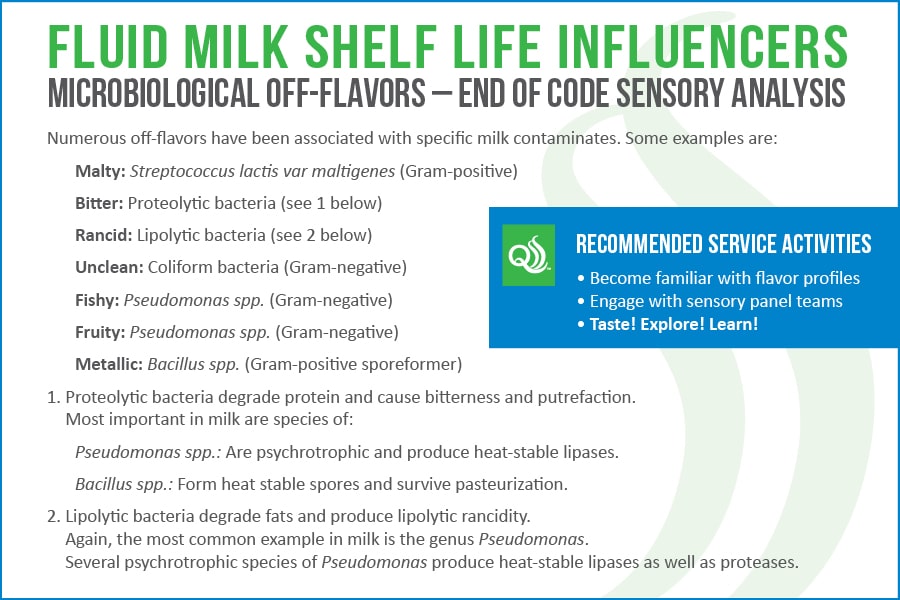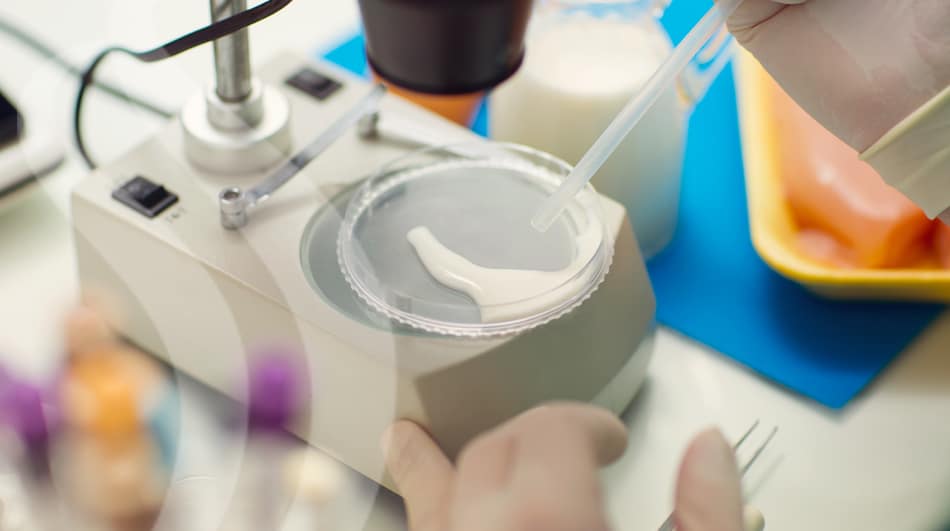Raw Milk Dairy Micro Testing (Part 1)
Why do you do it? What do the test results tell you? Is the test you use still a valid one?
This is a guest post written by Neil Bogart, Executive Area Technical Support Coordinator of NA Food & Beverage for Ecolab Inc. He is a highly respected adviser in the food and beverage industry, providing troubleshooting, technical support, cleaning, and sanitizing solutions to the dairy, food, beverage, and bottled water markets. See author Bio at the end of the post.
Part 1 Topic: Where do you start and what do you test for when it comes to raw milk dairy micro testing?
In part one of this dairy micro testing series, Raw Milk Dairy Micro Testing, I would like to take you on a journey through the development of some of the principal tests used in the fluid milk industry, what they were meant to evaluate, and whether they are still valid today. When discussing microbiological testing with dairy labs, one of the first questions I tend to ask is, “Why are you running that test?” The typical answer is, “They were running the test when I got here.” My next question is, “What is that test telling you?” Most of the time, it is unknown. If your objective is to achieve a certain shelf life for your product at 45ᵒF (7.1ᵒC), shouldn’t your dairy micro program support the desired outcome? So, let’s start the journey.
When it comes to dairy micro testing, you start with raw milk.
When trying to achieve 16+ days of shelf life at 45ᵒF (7.1ᵒC), you must have Gram-negative bacteria under control on both the raw and pasteurized sides of the facility. The Gram-negative bacteria on the raw side see a 99.999% reduction through high temperature short time (HTST) pasteurization, theoretically. Whereas, on the pasteurized side of the facility, there is no further microbial reduction.
So why does it matter? If the Gram-negative count is too high, some can pass through the HTST, especially in biofilm sluff off. The other major issue is the proteolytic and lipolytic heat-stable enzymes produced by the Gram-negatives in raw milk. Proteolytic enzymes break down proteins causing bitterness, putrefaction, and clabbering of the milk1. Lipolytic enzymes break down fat, causing rancidity1. These heat-stable enzymes can survive pasteurization, potentially causing flavor and texture issues throughout the shelf life of the product.

The first line of defense for microbiological testing is at the receipt of raw milk.
In addition to testing for antibiotics, taking a representative sample from the tanker in the receiving bay and running selective tests can immediately tell you the potential quality of the raw milk at receipt. The myriad of additional tests that can be run on the initial representative sample to determine the quality of the raw milk include:
- Direct Microscopic Count (DMC)
- Direct Microscopic Somatic Cell Count (DMSCC)
- Freezing Point
- Titratable Acidity (TA)
All these tests have industry reaction levels established to help determine the quality of the raw milk at receipt and making the decision to offload or reject it. I will discuss these quality tests and present my recommendations in the final article of this series.
You have accepted the raw milk; now what dairy micro tests should you run?
After you complete the initial tests and choose to accept the raw milk, there are historical dairy micro tests that can be run to help better determine the quality of the milk received. Based on the tests, you can drill down to the individual farms in the support of increasing the quality of the raw milk to the highest standards needed to achieve the desired processed milk shelf life and quality.
The first test I would like to discuss is the raw milk Preliminary Incubation (PI) Test, also known as a stress test. In the 1940s and ’50s, Dr. C. K. Johns of the Canadian Department of Agriculture started to understand that bacteria got damaged and/or stressed throughout the milking process. He developed a test, the raw milk PI Test, allowing the injured bacteria to recover and the present bacteria to grow to numbers capable of being estimated. The PI Test helps determine if milk has been produced sanitarily or not. Other benefits of the PI Test:
- More selective of psychrotrophic bacteria
- More sensitive than non-stress tests
- Helps identify issues before they become larger concerns.
The only negative is the special incubator (12.8C) needed to run the test. It tends to be expensive, and the incubator is only used for the PI Test and the Heat Resistant Spore Shock Test, which will be discussed in the next article.
If your company is not concerned with Heat Resistant Spores, due to the desired shelf life or processing parameters, you may choose to use the Fresh Standard Plate Count (SPC) test on the raw milk and set your acceptable limit to ≤5,000 colony-forming units per millilitre (cfu/ml)2. A study done in Pennsylvania found that low-level Fresh SPC counts correlated to low PI counts (Jayarao et al., 2004).
In the next article, we will dive more into dairy micro with Heat Resistant Thermoduric/Psychrotrophic Spore Formers in raw milk and throughout processing. If you are pasteurizing at >164ᵒF and desiring a shelf life beyond 16 days at 45ᵒF., you will want to read this next article. Where do these bacteria come from, when, where, and how are they detected, and how does our processing affect them?
Improve Driver Safety and Operation Efficiency
The traditional sample-taking process from the tanker is a safety concern for the milk receiver. The receiver dons a harness and either climbs up the ladder on the side of the tanker or up onto a platform to collect the pre-receipt lab samples. Each one of these trips to the top of the tanker is a risk to the receiver personnel. Read our guest blog post by Mark Moores, a highly respected adviser in the insurance industry, explaining why integrating QualiTru’s tanker truck ports into your fleet is a strategic investment in risk management.
QualiTru Sampling Systems new adjustable tanker truck sampling port allows tankers to be sampled safely in the yard from ground level. This speeds up the receiving process, increases receiving efficiency, and reduces the inherent risk to the receiver personnel. The new adjustable tanker port welds onto the inner tank wall and accommodates trailers with varying thicknesses of insulation (from ~4.3” to 6.0”) to minimize the need for additional retrofitting and fabrication.
Have questions about aseptic and representative sampling for dairy plants?
Additional resources related to dairy micro testing:
Free on-demand webinars:
Sampling and Testing Dairy Ingredients
Previous blog posts:
How Standard Plate Count Affects Raw Milk Quality
How Bacterial Generation Times Impact Fluid Milk Quality and Shelf life
Training
Site application schematics
Usage guides
References: (1) Hill, A., & Ferrer, M. A. (2021, January 1). Raw milk composition and Quality. Cheese Making Technology eBook. Retrieved January 24, 2023, from https://books.lib.uoguelph.ca/cheesemakingtechnologyebook/chapter/raw-milk-quality/ (2) Jayarao, B. M., S. R. Pillai, A. A. Sawant, D. R. Wolfgang, and N. V. Hegde. 2004. Guidelines for monitoring bulk tank milk somatic cell and bacterial counts. J. Dairy Sci. 87:3561–3573.




